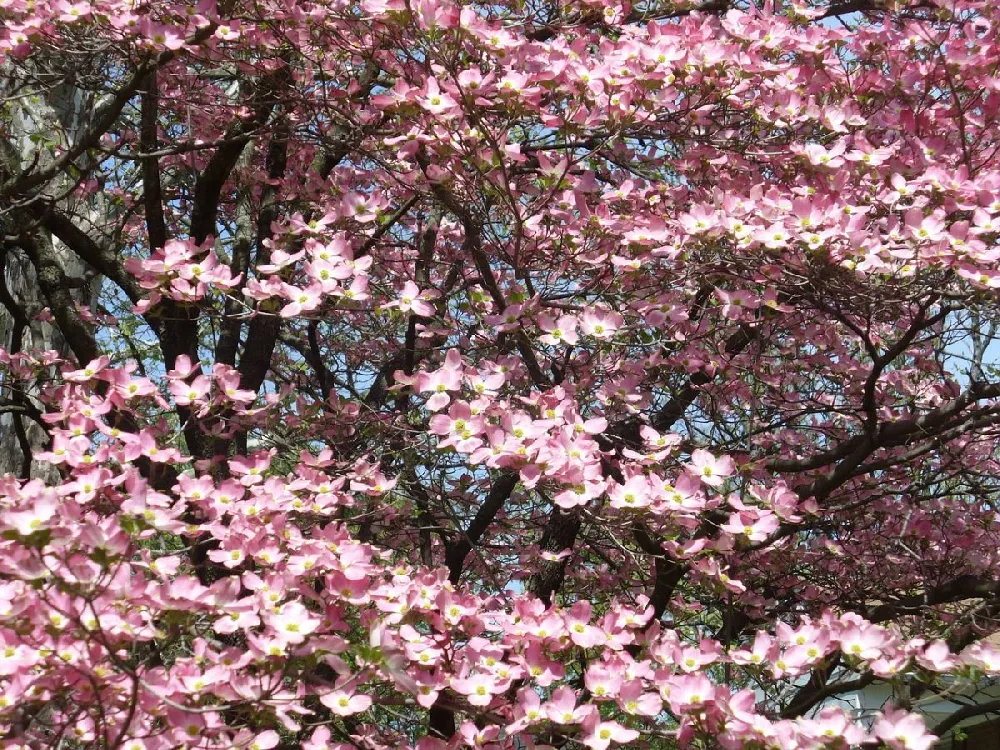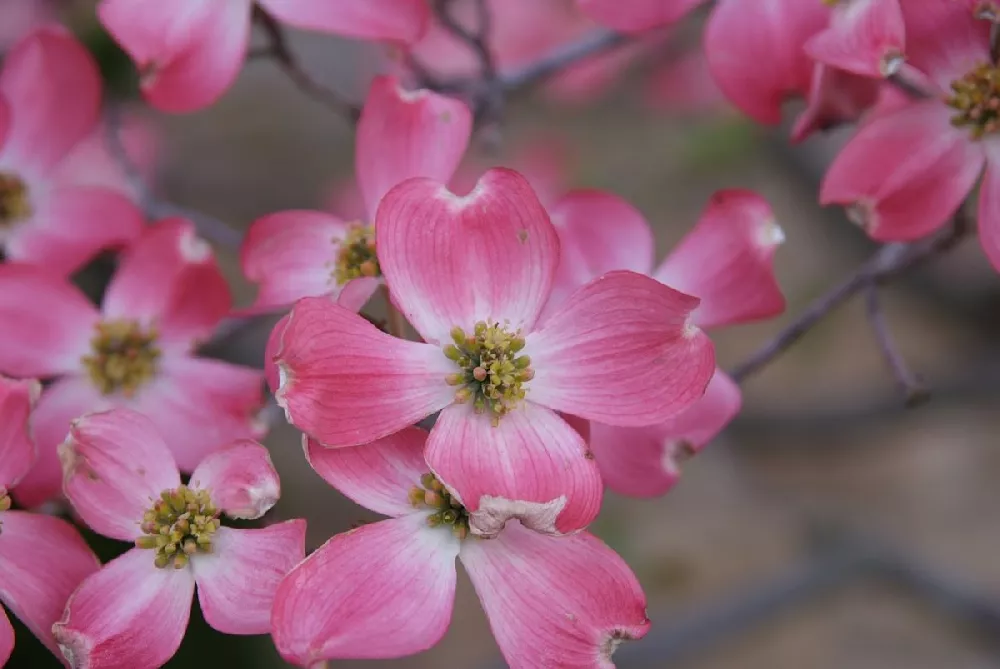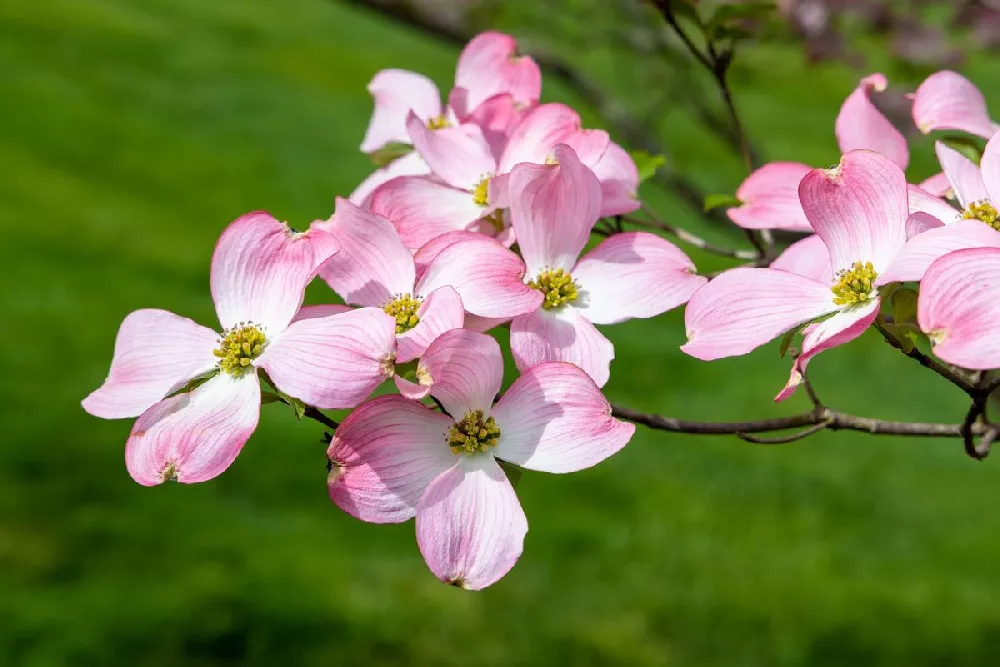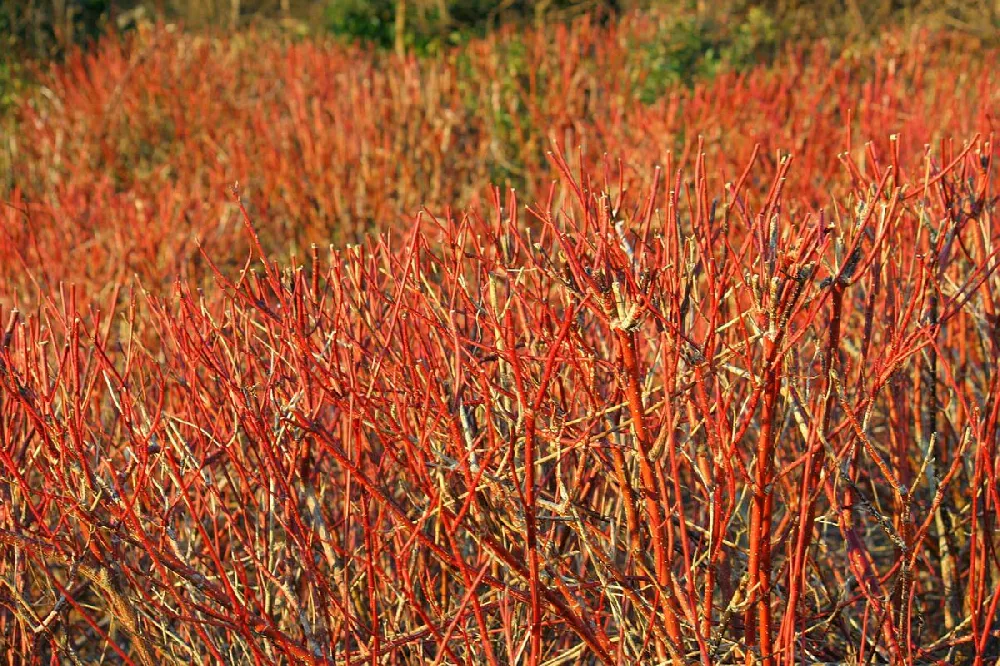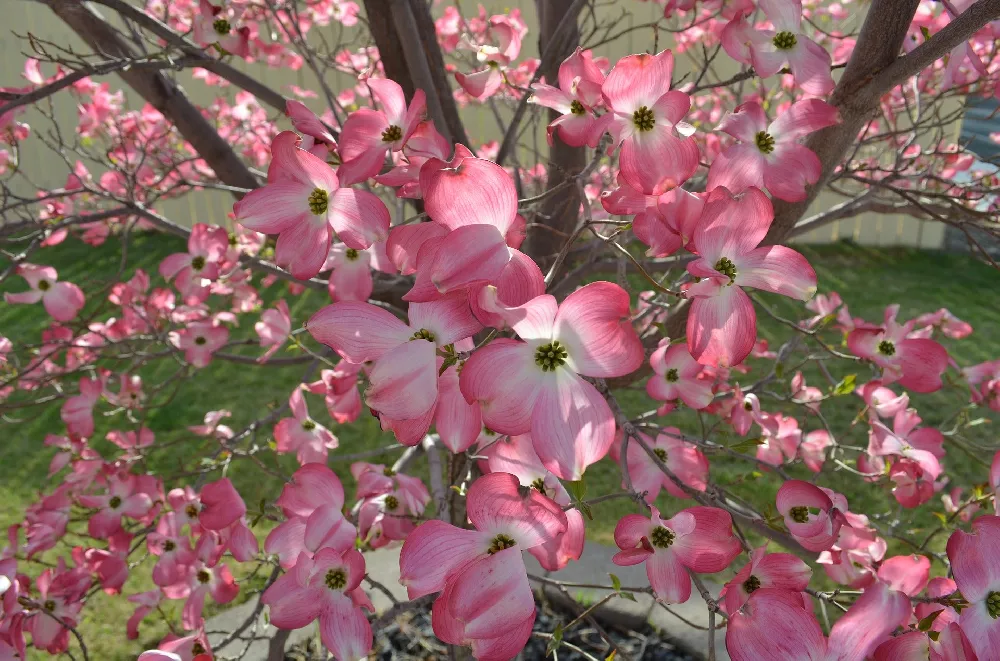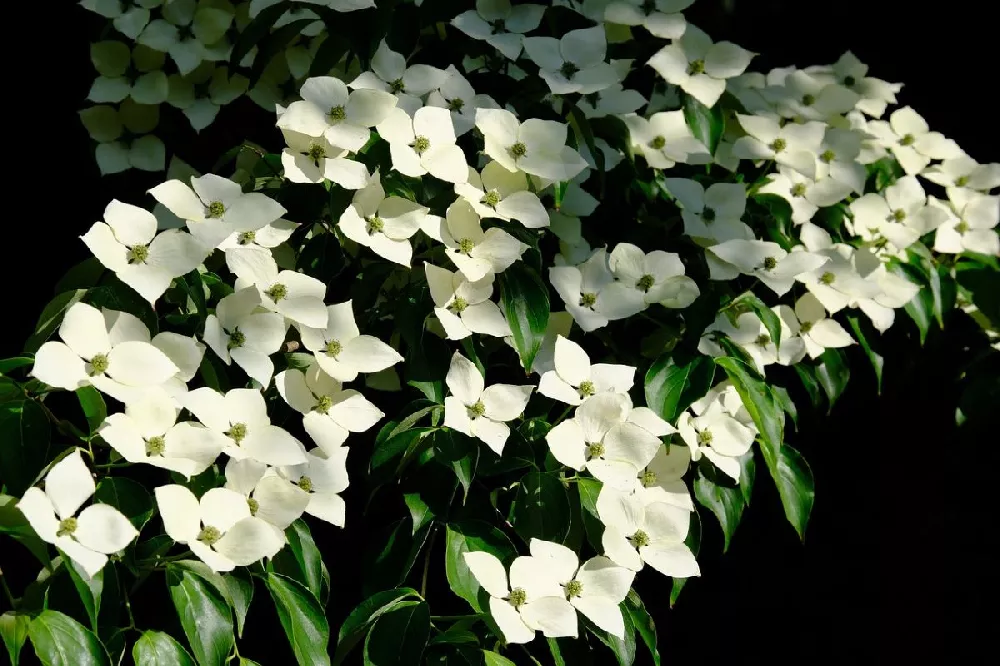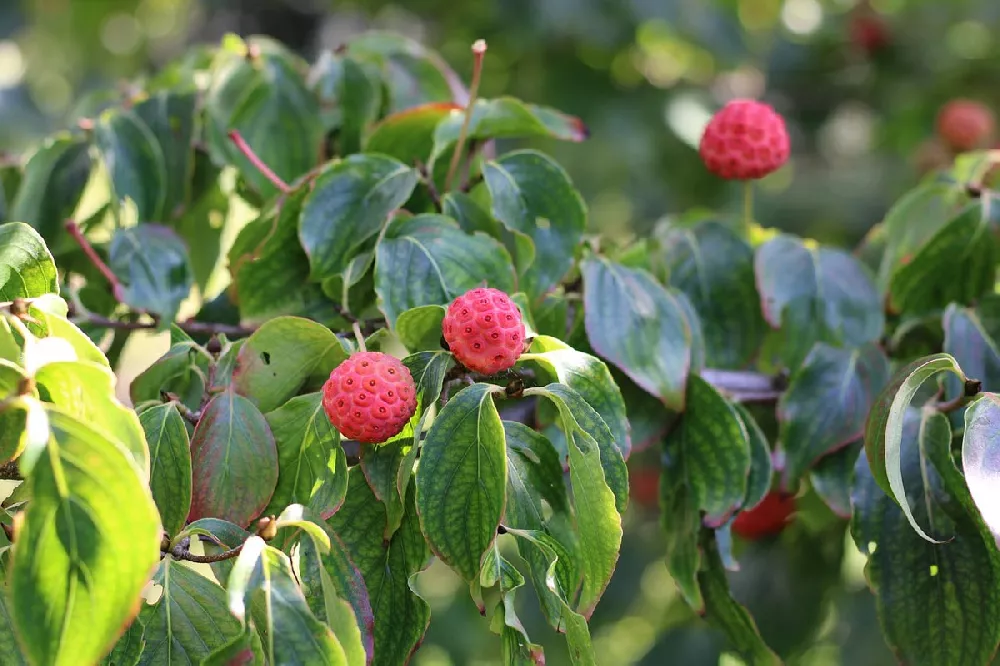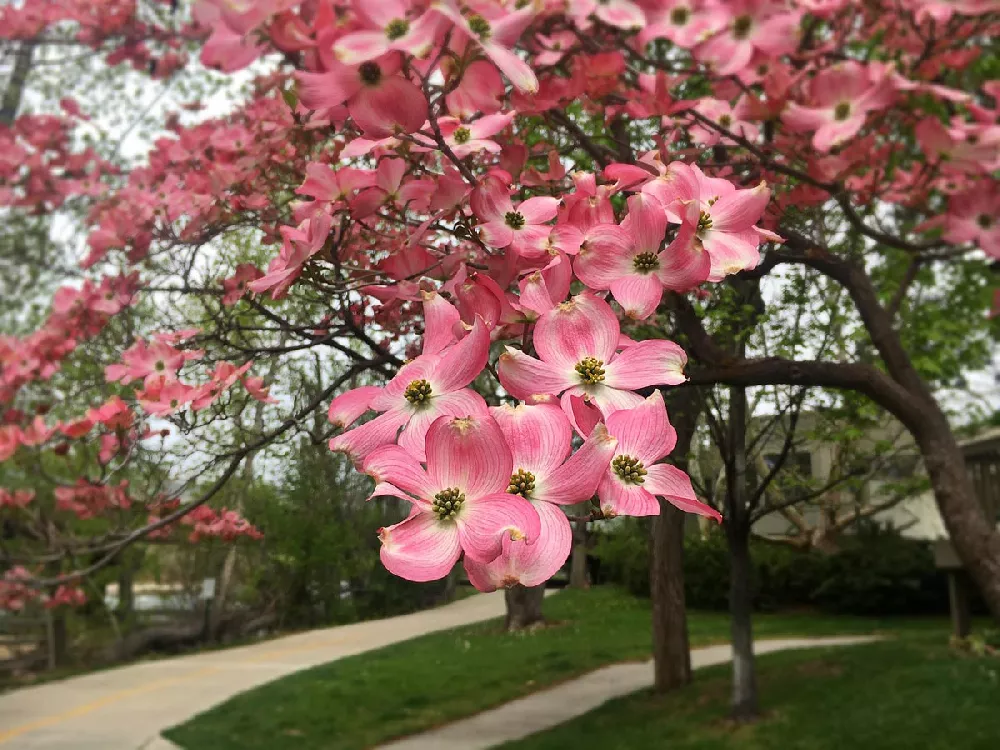- Home >
- Flowers >
- Trees and Plants with Pink Flowers >
- Cherokee Chief Dogwood
Cherokee Chief Dogwood for Sale - Buying & Growing Guide
- Ships in 1-2 days
- 1-Year Warranty Eligible
- Pots or accessories are not included unless specified in the product options.
Shipping Details:
Once your order is shipped, you’ll receive an email with a tracking number and estimated delivery date. Most orders ship immediately, but some items are seasonal and may only ship in spring or fall. These products are noted on the website.
The Cherokee chief dogwood, or Cornus florida 'Cherokee Chief,' is one of the most fantastic red-blooming dogwoods in existence. Each spring season, this cultivar will bloom with dark red flowers that will add a pop of color to your landscape while attracting native pollinators. After the bloom time, the Cherokee chief dogwood continues to impress with its graceful growth habit, its red fall color and its bright red fruits, which can persist long into winter.
- The Cherokee chief dogwood tree blooms with ruby-red flowers in spring.
- This tree offers interest during the entire growing season.
- Cherokee chief dogwoods attract beautiful wildlife all year.
Plant Care
Sunlight

Grow your Cherokee chief dogwood in either full sunlight or partial shade.
Watering
Water this tree about once per week during the hotter parts of spring and summer.
Fertilizing

Feed this tree once in early spring and once in late spring using a balanced or nitrogen-rich fertilizer.
Planting and Care
Planting instructions
This tree survives in USDA hardiness zones 5-9. Those living in the cooler parts of that range can plant this tree in either full sunlight or partial shade. Those living farther south may need to avoid full sun. The best soil for this plant is well-draining and somewhat acidic. To plant a Cherokee chief dogwood, choose an area that has about 15-20 feet of space in all directions into which this plant can spread its canopy. Then, dig a hole that is as deep as the root ball is tall and about twice as wide.
Watering and nutrients
A newly planted Cherokee chief dogwood should receive water about twice per week during the first growing season to aid establishment. After the first growing season, this tree will need water about once per week during the hottest parts of spring and summer. During other times of the year, the water needs for this plant will remain low. Feed this plant twice per year — once in early spring and once in late spring — using a fertilizer that is balanced or has a higher ratio of nitrogen.
Pollination
One odd aspect about dogwoods is that although they have bisexual flowers, which typically means self-pollination is possible, these plants are typically self-incompatible, meaning that they need a companion plant in order to produce fruits. As such, if you want to enjoy the fruits of your Cherokee chief dogwood, you’ll need to plant an additional dogwood tree nearby. Typically, dogwoods rely on larger insects, including bumblebees, to carry their pollen. However, it can be possible for these trees to spread their pollen via the wind as well.
Pruning
It can be somewhat difficult to find a suitable time to prune a dogwood. On the one hand, these plants produce sap during the active growing period, and pruning during that time can cause the sap to bleed. On the other hand, dogwoods set their flower buds on old wood, which means pruning during winter and early spring risks removing some of the blooms. With that said, the dormant period is the better time to perform pruning. Fortunately, pruning doesn’t need to be extensive as these plants tend to take on a pleasing form on their own.
Pests, diseases and animals
Unfortunately, there are several diseases that can threaten your Cherokee chief dogwood. Many of those diseases are fungal and can be quite damaging to your tree’s health. Some of the most common diseases for this plant and its relatives are powdery mildew and leaf anthracnose, which results in significant leaf discoloration. Sadly, pests can also be an issue for dogwoods. Along with other common garden pests, borers are particularly likely to infest a Cherokee chief dogwood.
Achieving maximum results
Pruning your Cherokee chief dogwood at the wrong time of year is one of the easiest ways to harm it. For instance, if you prune in early spring, not only will this tree begin to bleed sap, but it may also become more vulnerable to pests and diseases. Aim to time your pruning for late fall and early winter to avoid these issues. When pruning, be incredibly mindful of the flower buds. Removing too many of these buds will leave your plant looking relatively bare when the bloom time arrives.
FAQs
What makes the Cherokee chief dogwood different from other dogwoods?
There are a few significant ways in which the Cherokee chief dogwood is different from other popular dogwood varieties. The most noticeable difference relates to this plant's flowers, which are red and darker than the flowers of most other dogwood varieties. Additionally, the Cherokee chief dogwood often proves to have a stronger ability to withstand the cold. While other dogwoods may begin to struggle while growing in USDA hardiness zone 5, the Cherokee chief dogwood does not.
How large does a Cherokee chief dogwood grow?
Like many dogwoods, the Cherokee chief dogwood is a medium-sized ornamental tree. At maturity, this plant will reach about 15-25 feet tall with a spread that has a similar dimension. That height and spread make for a manageable tree with a spreading habit. At times, the spreading canopy of a Cherokee chief dogwood can become large enough to provide some much-needed shade in summer.
What color are the leaves of a Cherokee chief dogwood?
The color of a Cherokee chief dogwood's leaves will change depending on the season. During spring, when the leaves first emerge for the year, they will have a darker green color with a slight bronze tint. During summer, the leaves are a more typical green. Then, in fall, the leaves of this plant enter their most impressive phase as they turn reddish-orange before falling to the ground.
Compare Similar Products
You can't add more Product Name - Product size to the cart.
OK